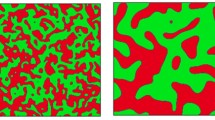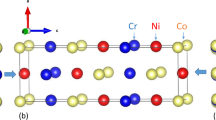Abstract
We study analytically the approach to equilibrium in a simple zero-temperature model for phase separation in a binary alloy, in which nearest neighbor interchange can occur only if the portion of AB bonds is thereby decreased. The approach to equilibrium is found analytically. Because of the existence of infinitely many possible stationary states, the asymptotic distribution of AB pairs depends on the details of the initial state and must be obtained by a recursion method.
Similar content being viewed by others
References
A. Levy, S. Reich, and P. Meakin,Phys. Lett. 87A:248–253 (1982).
P. Meakin and S. Reich,Phys. Lett. 92A:247–250 (1982).
R. G. Palmer and H. L. Frisch,J. Stat. Phys. 38:867–872 (1985).
F. C. Alcaraz, J. R. Drugowich de Felicio, and R. Köberle,Phys. Lett. 118A:200–202 (1986).
Author information
Authors and Affiliations
Additional information
Chargé de recherches FNRS.
Rights and permissions
About this article
Cite this article
Elskens, Y., Frisch, H.L. Aggregation kinetics for a one-dimensional zero-degree Kelvin model of spinodal decomposition. J Stat Phys 48, 1243–1248 (1987). https://doi.org/10.1007/BF01009543
Received:
Issue Date:
DOI: https://doi.org/10.1007/BF01009543




